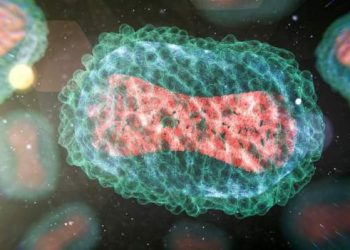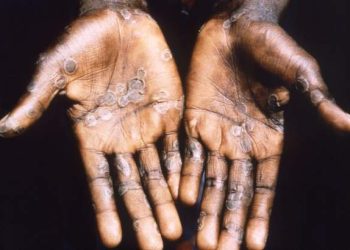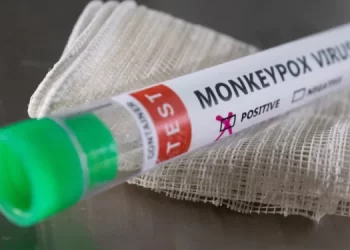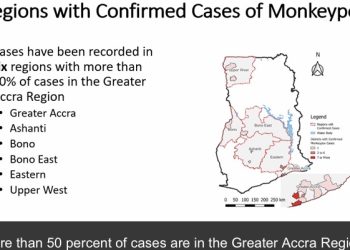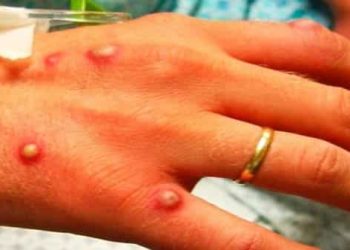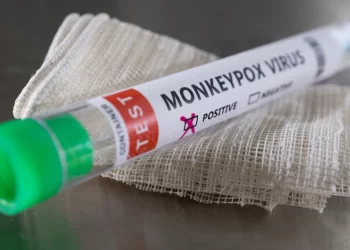It was a warm day in October 2003 in San Diego, California, USA. I was attending the Infectious Disease Society of America’s annual conference. I passionately stood up at a meeting to express my thoughts about media reports connecting Ghana, my country of birth, to a monkeypox outbreak in the US. Fifty-three people had contracted monkeypox in a multistate outbreak. It turned out that after testing and investigation by the CDC, the infection was related to prairie dogs purchased as pets at a pet store in Illinois. The prairie dogs had been kept close to rodents imported from Ghana, a country where the human monkeypox disease has never been reported to date. These rodents were later found to test positive for the monkeypox virus.
The prairie dogs became infected as a result of proximity to the infected rodents and then transmitted the infection to their owners. This resulted in a ban on the importation of African rodents into the US to date to prevent further outbreaks. That was the last time the US had an outbreak of monkeypox disease. No one died in the outbreak. One child developed a brain infection or encephalitis.
Monkeypox, a disease caused by the monkeypox virus, occurs very infrequently and in very scattered locations in parts of Africa. There are two clades (or types) of the virus: a West Africa (WA) clade in which 1 to 3.6 out of 100 infected patients die (1% to 3.6% mortality) and the Congo Basin (CB) variant, in which about 10 out of 100 infected patients can die (10% mortality). So far, the virus isolated in this current outbreak is of the West African variant, implying that the risk of dying from this disease is very low.
Background
The outcome of the 2003 outbreak reflects concepts in the natural history of the disease. It is a zoonosis in which humans get infected by infected animals.
Monkeypox disease is usually a mild self-limited illness caused by the monkeypox virus. It usually does not require treatment. It can be severe in children, pregnant women, and those with impaired immune systems.
The virus belongs to the orthopox family of viruses. It is a disease that affects animals. It was first discovered in laboratory monkeys in Copenhagen, Denmark in 1958. The monkeys had been imported from Singapore to study the polio vaccine, giving rise to the name, “monkeypox”. Since then there have been a few more outbreaks in laboratories around the world including in the US. However, mentally, people tend to associate it with Africa because, in 1970, the first human case was reported in an African child.
Since its discovery in 1970, there have been infrequent occurrences in a few locations around the world. From January 1, 2022, to May 1, 2022, the Democratic Republic of Congo reported one thousand, two hundred and thirty-eight cases with fifty-seven deaths, while Nigeria reported forty-six cases and no deaths.
In July and November of 2021, two travelers returning to the US from Nigeria were diagnosed with monkeypox and recovered. Between 2018 and May 2022, there have been nine cases related to travel in non-endemic countries: Two in the US, five in the UK, one in Israel, and one in Singapore. None of the travel companions were infected, and only one healthcare worker in the UK became infected.
On May 18, 2022, a man in Massachusetts with no history of travel was diagnosed with a confirmed case of the disease. Eight additional cases have been confirmed in seven states in the US including New York, Florida, California, Utah, Virginia, and Washington.
This is occurring at a time when two hundred and fifty cases have been reported since May 13, 2022, in eighteen countries, in persons who have not traveled to the countries where cases have occurred in the past- suggesting a worldwide outbreak.
These countries include the USA, Canada, Portugal, Spain, Australia, France, Germany, Italy, Netherland, Sweden, and the United Kingdom. Portugal and Spain have the largest numbers.
The cases have been found mainly, but not exclusively, in men who have had sex with men, and are seeking care in sexual and outpatient clinics for a rash appearing around the genital areas.
Signs and symptoms
Monkeypox disease starts with a headache, fever, cough, sore throat, and lymphadenopathy (enlarged lymph nodes) accompanied by muscle aches and a profound sense of exhaustion.
This lasts about three days and occurs about five to twenty-one days after exposure to an index case. This period of carrying the disease without showing symptoms is known as the incubation period.
These initial symptoms are followed by a rash. The rash is made up of flat lesions (macules), which progress to palpable flat-topped rashes (papules) and then to fluid-filled lesions (vesicles).
These rashes start around the mouth, progressing to the head, chest, and abdomen, and then to the arms and legs, including the palms of the hands and soles of the feet.
Symptoms can mimic chickenpox, smallpox, and syphilis. However, smallpox disease does not present with enlarged lymph nodes. Chickenpox disease has rashes at various stages of development while in monkeypox the stages of the rash are the same on all parts of the body.
Chickenpox rash starts on the hands and moves to the center of the body while the rash of monkeypox starts in the center parts of the body and marches to the arms and legs.
The monkeypox rash is deep in the skin and therefore firmer to touch. The individual rashes may have a dimple or appear umbilicated. The fluid in the rashes is infectious. Over a period of two to four weeks, the rashes will scab over and subsequently become noninfectious.
The infected person can transmit the infection in three main ways: direct contact, respiratory droplets, and inanimate objects. This period of being infectious starts a day before the person is feverish, and if he or she has a rash, during the whole period of the active rash.
First, very close contact may cause the virus in bodily fluids to get onto another person. Second, large respiratory droplets from the sick person can be inhaled leading to infection. Finally, fomites (particles of clothing or other inanimate objects) from the body of the patient can cause the disease to be transmitted too. A pregnant woman can also transmit to her unborn child leading to a congenital infection and stillbirth.
Infection by droplets can occur if an individual is within three to six feet of sick persons. Unlike chickenpox, monkeypox is not airborne and cannot travel for long distances.
In this current outbreak, the rash is in the genital area and seems to be occurring in men who have sex with men suggesting that close contact with the skin around the genital area of an infected person is key to the transmission.
Diagnosis
Diagnosis is established by finding the virus using real-time polymerase chain reaction (PCR) or DNA sequencing performed on body fluids from infected persons. There are three categories of sick persons for consideration in view of disease control and mitigation methods.
A suspected case is any person of any age presenting with an unexplained acute rash in a non-endemic country, who has a fever, lymph nose swelling, and other characteristic symptoms, and whose rash cannot be explained by causes such as chickenpox, chikungunya virus, zika virus, dengue fever, drug reaction or the more common causes of an acute rash.
A probable case is a suspected case who also has the following: exposure to a confirmed case, travel history to an endemic country, multiple anonymous sexual partners in the last twenty-one days, hospitalized or tested positive for the orthopox family of the virus with an antibody test or other testing method.
A confirmed case is a probable or suspected case whose bodily fluids have been tested to be positive for the monkeypox virus by real-time PCR testing or sequencing. This person should isolate for twenty-one days, and his or her contacts should be monitored closely.
Prevention and control action points
All doctors and healthcare workers worldwide should be on the lookout for all cases and report to local authorities to allow prompt diagnoses and prevent spread.
All probable and confirmed cases should be reported to the WHO.
Hospitals and healthcare workers should use standard contact and droplet precautions when they care for these patients. Masks must be worn when in proximity to an infected person because of the respiratory method of transmission. Healthcare workers must promptly identify infections so that confirmed or suspected patients can isolate themselves and prevent transmission and curtail the outbreak.
Specimen from infected, suspected, and probable cases should be handled with care when being transported to designated equipped laboratories to prevent transmission to the laboratory staff.
Treatment and vaccination
In September 2019, a new vaccine, JYNNEOS, was licensed by the FDA for the prevention of smallpox and monkeypox in people older than eighteen years of age. It was made from the Modified Vaccinia Ankara- Bavarian Nordic (MVA-BN), a live nonreplicating virus. Its other names are IMVAMUNE, MVA, or IMVANEX. ACAM 2000 is a live vaccinia virus vaccine that was approved in 2007. It tends to cause self inoculation and has been associated with heart muscle inflammation in 5.7 out of 1000 recipients. It has 85% efficacy against the monkeypox and has received emergency access to investigational drug use for other orthopoxviruses such as monkeypox in an outbreak. Both vaccines can be deployed in individuals whose risk of disease acquisition is high and in healthcare workers who have been exposed or may be exposed to the disease.
Tecovirimat is an antiviral agent that occurs in oral formulation and intravenous forms approved by the FDA in July 2018 and in May 2022 respectively for the treatment of smallpox. Tecovirimat can be used to treat severe monkeypox and is available by calling the US CDC. It goes by the name TPOXX or ST-246. Vaccinia Immune Globulin Intravenous (VIGIV) originally licensed for use in complications related to smallpox vaccination is also available for post-exposure treatment.
The CDC will take requests for vaccines, Tecovirimat, and VIGIV only from State or Territorial health authorities. Medical countermeasures for monkeypox can be obtained by calling the CDC Emergency Operations Center at 770-448-7100. The CDC can also be reached for information by calling 1-800-CDC-INFO in the US (1800 232 4636)
The general risk of acquiring this infection is currently extremely low. It is nowhere as highly transmissible as COVID-19. The risk of dying from this disease is very low. It has no potential to cause a pandemic.
Stay calm and arm yourself with knowledge.
Sources: www.who.int, www.cdc.gov
The author, Bertha Serwa Ayi (MD, FACP, FIDSA, MBA) is a Ghanaian-born infectious disease consultant with over 17 years as a specialist. She is currently based in Fargo, North Dakota, USA.







